Effects Over 24Hr of Exercise Targeted on Lipid versus Carbohydrate Oxidation on Eating Behaviour in Normal Weight Volunteers
Marie Guiraudou, Amira Chérif, Marlène Richou, Thibault Fidani, Ahmed-Jérôme Romain, Jacques Mercier, Eric Raynaud de Mauverger and Jean-Frédéric Brun*
PhyMedExp, CNRS UMR 9214, INSERM U1046, University of Montpellier, and Department of Clinical Physiology, Metabolic Explorations (CERAMM) Centre Hospitalier Universitaire (CHU), Montpellier, France
*Address for Correspondence: Jean-Frédéric Brun, PhyMedExp, CNRS UMR 9214, INSERM U1046, University of Montpellier, and Department of Clinical Physiology, Metabolic Explorations (CERAMM) Centre Hospitalier Universitaire (CHU), Montpellier, France, Tel: +046-733-6733; ORCID ID: orcid.org/0000-0002-2025-6340; E-mail: j-brun@chu-montpellier.fr
Submitted: 14 May 2018; Approved: 28 June 2018; Published: 29 June 2018
Citation this article: Guiraudou M, Chérif A, Richou M, Fidani T, Romain AJ, et al. Effects Over 24Hr of Exercise Targeted on Lipid versus Carbohydrate Oxidation on Eating Behaviour in Normal Weight Volunteers. Int J Sports Sci Med. 2018;2(2): 031-035.
Copyright: © 2018 Brun JF, et al. This is an open access article distributed under the Creative Commons Attribution License, which permits unrestricted use, distribution, and reproduction in any medium, provided the original work is properly cited
Keywords: Obesity; Exercise; LIPOXmax; Metabolism; Lipids oxidation; Appetite; Satiety
Download Fulltext PDF
Exercise reverses muscular metabolic defects involved in the impairment of lipids oxidation in obesity, and modifies eating habits, exerting both an orexigenic and a satietogenic effect.
Our working hypothesis is that the orexigenic effect, which is triggered by glycogen depletion and high intensity exercise, is minimized when exercise is performed at the level of the LIPOXmax, and thus uses lipids and spares glycogen. Accordingly, its weight-lowering effect could be related to a mostly satietogenic with little orexigenic effect, while exercises at higher intensities would be more orexigenic because of an important use of carbohydrates.
We studied over 24 hours the effects of an exercise targeted by exercise calorimetry, in 10 normal weight volunteers. Subjects performed at random order three sessions: 45 minutes of steady state exercise targeted on the LIPOXmax, an isoenergetic exercise targeted at the LIPOXzero (exercise intensity in which there is no longer lipid oxidation and only carbohydrate oxidation) and a morning without exercise.
The evolution of appetite and satiety is measured with an analogous visual scale (Hill and Blundell). Capillary blood glucose is also measured. 20 minutes after exercise and after the morning without activity a meal test is proposed, along with a scale of palatability.
Energy ingested over the 24 hours is calculated with a food notebook filled by the subjects.
In these subjects after the LIPOXmax session, the following breakfast contains fewer calories and fewer carbohydrates. After the LIPOXzero session, the breakfast remains unchanged. Blood glucose decreases during the LIPOXzero session and remains stable during the LIPOXmax session. When the blood glucose decreases there is a parallel increase in hunger.
These findings are in agreement with our working hypothesis. Orexigenic effects of exercise mostly occur at levels where carbohydrate oxidation predominates, resulting in a decrease in blood glucose. On the other hand, satietogenic effects prevail at exercise levels close to the LIPOXmax, where lipid oxidation results in a sparing of carbohydrates.
The paradox of the fair weight-reducing effect of moderate volumes of LIPOXmax exercise in spite of its low intensity, while exercise at higher intensities is deceiving for this purpose unless it is used at high volumes, is likely to be due (at least in part) to their different effects on eating behaviour.
Introduction
Exercise is an essential component of the management of obesity. Its weight-lowering effect is classically assumed to be explained by the energy deficit it induces, but there are clearly other mechanisms that have been highlighted more recently. Exercise has been shown to reverse metabolic muscular defects that result in a decrease of lipid oxidation in sedentary obese patients [1]. In addition, it also modifies eating behaviour. This last effect is complex, since it includes both an orexigenic and a satietogenic component [2].
Therefore exercise can either increase or decrease food ingestion according to the balance between these two effects. The literature on this topic is quite complex [3].
Recently the Energy Balance Study demonstrated in a series of 421 subjects that low levels of physical activity are associated with dysregulation of energy intake and fat mass gain, with a threshold of activity at 7116 steps/day [4]. However, which exercise procedure can reverse this dysregulation and restore an energy balance sufficient for correcting obesity is not clearly established in the current literature. According to a recent review by John Bludell, individual responses of appetite to exercise are highly variable and difficult to predict [5].
Our working hypothesis is that (a) orexigenic effects are mostly triggered by exercise bouts that involve glycogen depletion and/or hypoglycaemia, and thus predominate after high intensity exercise, and (b) on the opposite, orexigenic effects are minimal when exercise is performed at the level of the LIPOXmax which burns less carbohydrates and allows glycogen sparing. Therefore, we hypothesize that the weight-lowering effect of endurance training targeted at low intensity (50% VO2max or below) in the zone of lipid oxidation, is at least in part explained by a favourable balance between satietogenic and orexigenic effects, favouring satiety, while exercise at higher intensity are more orexigenic because of a more important use of carbohydrates.
Materials and Methods
Subjects
To investigate the presence of sleep disorders, anxiety, depression, psychiatric disorders and somatization disorder. 50 patients from hand surgery unit were selected using inclusion criteria.
The study was performed in 10 normal weight volunteers, (age: 24.1 ± 0.46; Body Mass index: 22.2 ± 1.36 kg/m²; theoretical VO2max: 44.2 ± 8.26 ml/min). Characteristics of these subjects are given on table 1.
Exercise calorimetry
Exercise calorimetry was performed as previously described [6] in order to analyse the balance of energetic substrates. Patients should remain fasting for 12 hours. The test is composed of 4 steps of 6 minutes steady state exercise set at respectively 30, 40, 50 and 60% of the maximal predicted power on cycloergometer connected with a gas exchange analyser allowing an analysis cycle by cycle with control of ECG and measurements of VO2, VCO2, and respiratory exchange ratio. At the end of each stage, during the fifth and the sixth minute, values of VO2 and VCO2 were measured every 30 seconds and then averaged over 2 min.
From these values we determined the respective part of oxidation of carbohydrates and lipids by applying the equations of indirect calorimetry. The point where lipids oxidation reaches its top is called LIPOXmax. This point is calculated from smoothing the relation L (mg/min) = 1.7 VO2 (1- RQ), as the power intensity at which the derivative of this equation is equal to zero. There is another point where carbohydrates become the predominant substrate used for oxidation and represents more than 70 of energy: this point is called the Crossover Point (CXP) [6]. We also calculated the VO2max ACSM according to the guidelines of the American College of Sports Medicine. This value was used to express LIPOXmax and CXP as percentages of VO2max.
Experimental protocol
We studied over 24 hour the effects of an exercise bout targeted at a level determined by exercise calorimetry, each subject performed at random order (according to Cochran and Cox’s random sampling numbers table [7]) three sessions. They performed either 45 minutes of steady state exercise at the LIPOXmax level, either an isoenergetic exercise at the LIPOXzero (exercise intensity in which lipids are no longer oxidized) or one morning at rest without any exercise.
Subjective appetite sensations. Ratings of motivation to eat (appetite and satiety) during each session was assessed with a 140 mm Visual Analogue Scale (VAS) with words anchored at either end, evaluating hunger, fullness, prospective consumption, and desire to eat, adapted to French from Hill and Blundell [8]. The original version of this questionnaire contained six questions: “How much food do you think you could eat now” (A large amount-Nothing at all);
“Preoccupation with thoughts of food” (no thoughts of food/very preoccupied difficult to concentrate on other things); “How hungry do you feel?” (As hungry as I have ever felt- Not at all hungry); “How full do you feel?” (Very full-Not at all full), “Urge to eat” (no urge to eat/strong, want to eat now, waiting is very uncomfortable); “How much do you think you could eat now?” (A large amount-Nothing at all). A seventh item was added here: “My hunger has: increased/decreased”. The energy consumed over the 24 hours is calculated thanks to a food notebook filled by the subjects. We also applied a dietary auto questionnaire previously validated in sedentary and athlete subjects [9] in order to calculate caloric intake, protein intake, and the balance among nutrients. The French version of this classical British questionnaire of motivation to eat (appetite and satiety) derived from Hill’s one [8] and which was used here has been previously published elsewhere [10].
Capillary glucose was measured with the OneTouch Verio Flex™ meter (Life Scan S.A.S – 1 rue Camille Desmoulins, 92130 Issy Les Moulineaux – France). 20 minutes after exercise and also at the end of the morning without activity a test meal (pasta box) is proposed, along with a scale of palatability (data not shown).
Statistical analysis
Results are presented as mean ± the SEM. A value of p < 0.05 was considered as significant. Comparisons were made with nonparametric analysis of variance, and with the nonparametric tests of Mann-Whitney and Wilcoxon. Correlations were tested by least square fitting.Results
On the average the LIPOXmax of these subjects occurred at 42 ± 0.06 % of VO2 max and the LIPOXzero (level of exercise where the use of lipids is none) was at 76 ± 0.14 % of VO2max.
Eating behaviour
As shown on figures 1 & 2, it was observed that in these subjects both exercise bouts increased in a similar manner on the Hill’s scale the drive to eat ( p < 0.01) and its intensity ( p < 0.01) and have a similar orexigenic effect.
Dietary questionnaire
As shown on figure 3, after the exercise session performed at the LIPOXmax, the breakfast eaten in the following morning contained less calories ( p < 0.02) and less carbohydrates ( p < 0.02) compared to the breakfast of the preceding day. After the LIPOXzero exercise, the breakfast remained unchanged compared to the morning following the session without activity. There was a nonsignificant tendency to eat more over the 24 hr after LIPOXzero (11059.7 ± 1506 kJ/24hr) compared to LIPOXmax (9678.6 ± 854 kJ/24hr) and controls (9718 ± 925 kJ/24hr).
Blood glucose
During all exercise sessions, capillary glucose was monitored. Blood glucose was shown to significantly decrease during the session performed at LIPOXzero (-0.06 ± 0.02 mmol/l, p < 0.02). In this case the decrease occurred 8 times on 10. By contrast there was no significant change in capillary glucose during exercise performed at LIPOXmax, since in 50% of the cases it increased and decreased in 50% of cases. As shown on figure 4, all exercise sessions that resulted in a decrease in blood glucose induced an increase in hunger on the VAS (p < 0.001). By contrast when exercise did not decrease blood glucose, it was followed by a significant decrease in calorie intake over the next 24 hours (p < 0.005) as shown on figure 5.
Discussion
This randomized controlled study shows that spontaneous food intake is decreased over the period following a bout of exercise performed at the LIPOXmax. More precisely, the next breakfast contains less calories and less carbohydrates. By contrast, after an exercise bout performed at the LIPOXzero, the breakfast remains unchanged. Blood glucose decreases during the exercise bout performed at the LIPOXzero while it remains stable (on the average) during an exercise bout performed at the LIPOXmax. When the exercise bout induces a decrease in blood glucose, it increases hunger, while exercise that does not induce a fall in blood glucose results in a lower calorie intake over the following 24 hours.
These results lead to think that in normal weight subjects, 45 min of exercise performed at the intensity where lipid oxidation is optimal has a satietogenic effect. This satietogenic effect is associated on the average with a stability of blood glucose. By contrast when exercise is performed at the LIPOXzero and thus uses only carbohydrate as a fuel, it frequently determines a decrease in blood glucose and an increase in hunger.
In another work dealing with obese subjects followed during a few months, we observed that LIPOXmax training increases the feeling of satiety, decreases gradually the orexigenic effect of an isolated session and decreases the caloric intake which is correlated to a decrease of food thoughts and leads to weight loss in 72% of subjects [10]. Therefore, this controlled randomized study extends to normal weight subjects what we previously reported in a follow-up open study of obese patients.
These findings are likely to have important implications for exercise prescription in the context of weight management. Currently, the importance of physical activity in the management of obesity is no longer a matter of controversy. It is now well established that exercise is efficient for preventing obesity, for stabilizing weight after weight loss, and also to decrease body fat stores. However, for the later purpose, most studies show a rather modest effect, and there is no consensus about the intensity level that should be targeted [11].
It has become clear since decades that high volumes of physical activity, above 15 hours per week, are very efficient for losing weight, and even more if exercise is practised at high intensity: this has been remarkably demonstrated by the RESOLVE study [12]. The important calorie deficit induced by these high volumes of exercise is likely to explain most of the efficacy of this procedure. However, large series of patients treated by this approach are not available, since it is rather difficult for most obese sedentary people to find enough time and motivation to add such volumes of physical activity to their regular life.
Interestingly, even low volumes of exercise (3-4 hr/week) are able to determine weight loss, as clearly evidenced by recent studies [11,13]. A common belief is that, when exercising at low volumes, high intensity could be more efficient because it wastes more energy. However, high intensity exercise mostly involves carbohydrate oxidation and thus decreases glycogen stores and blood glucose concentrations, resulting in increased hunger, and, in turn, in many cases, paradoxical weight gain [14]. The results of the current experiment provide a very likely explanation for this apparently paradoxical observation. In individuals whose blood glucose decreases during such short and intense exercise bouts, there may be a predominance of the orexigenic effect of exercise and thus overeating and weight gain.
The Study of Targeted Risk Reduction Interventions through Defined Exercise (STRRIDE) confirms that, beside high training volumes that are obviously a powerful weight-lowering procedure, low volumes of activity (<4h/week) are also efficient on weight either at low or high intensity, and are even more efficient for improving body composition and carbohydrate metabolism at low intensity [13]. Our current observations are in agreement with that study and provide an additional explanation for this efficiency: clearly, the effects of exercise on appetite and satiety are not similar at high and low intensity, and low intensity exercise is an interesting tool to regulate appetite.
The methods used in this study require some comments. Since its first introduction at the end of the nineties, exercise calorimetry has been the matter of some controversies. In a recent review [15] we made an attempt to synthesize all this literature. It can be reasonably considered that the averaged VO2 and VCO2 values of a 6 min steady state exercise bout reflects the level of substrate oxidation that could be measured over a period of 45 min. By contrast, the often employed measurement on 3 min steps results in overestimation of lipid oxidation rate. The prediction of the power at which occurs maximal lipid oxidation by the derivative of the curve of lipid oxidation plotted against power intensity (LIPOXmax) is fairly reproducible when measured in standardized conditions, but is quite variable among individuals and is modified by a host of situations (previous exercise, feeding, etc…). Actually this level represents the intensity of exercise that would be spontaneously selected for exercising for a long time without being stopped by signs of exhaustion such as breathlessness or excess sweating... Recently some reports have shown that low volumes (3x45 min/week) of exercise targeted at this level induce in 85% of patients a prolonged progressive weight loss [16]. Since the zone of lipid oxidation is frequently not so narrow, it has been suggested that an exercise calorimetry is not mandatory to prescribe exercise targeted on lipids. However, one can also observe patients in whom this zone is very narrow and sometimes shifted to even lower power intensities. In this case, an exercise calorimetry is probably helpful to avoid to target exercise in the zone where carbohydrate wasting induces hunger.
On the whole, this study supports the hypothesis that the weight-reducing effect of low intensity exercise is at least in part explained by its effects on eating behavior. They are in agreement with an observational follow-up study on obese subjects [10]. These data allow to understand better the efficiency of this soft exercise training protocol but are still preliminary and must be confirmed. On a practical point of view, they lead to prompt clinicians involved in exercise prescription for obesity to carefully take into account the effects of exercise on appetite and satiety, which are likely to markedly influence the efficiency of training.
Acknowledgement
The authors declare that they have no disclosure of interest concerning the questions addressed in this study. These results were presented at the « 5e congrès conjoint de la Société Française de Médecine de l’Exercice et du Sport (SFMES) et de la Société Française de Traumatologie du Sport (SFTS) », in Grenoble, France, October 25-27, 2012, at the « 29e Congrès de la Société française d’Endocrinologie, Toulouse » (October, 2012), at the « 10e Journées Francophones de Nutrition, JFN2012, Lyon Centre des Congrès, » 12-14 Décembre 2012 and at the « Congrès de la Société Francophone du Diabète (SFD), Montpellier, March 26-29, 2013.
- Houmard JA, Pories WJ, Dohm GL. Is there a metabolic program in the skeletal muscle of obese individuals? J Obes. 2008; 32: 177-184. https://goo.gl/Zgs3eT
- King N, Caudwell P, Hopkins M, Stubbs JR, Naslund E, Blundell JE. Dual-process action of exercise on appetite control: increase in orexigenic drive but improvement in meal-induced satiety. Am J Clin Nutr. 2009; 90: 921-927. https://goo.gl/DscB1f
- Cameron JD, Goldfield GS, Riou MÈ, Finlayson GS, Blundell JE, Doucet É. Energy depletion by diet or aerobic exercise alone: impact of energy deficit modality on appetite parameters. Am J Clin Nutr. 2016; 103: 1008-1016. https://goo.gl/xo3qgz
- Shook RP, Hand GA, Drenowatz C, Hebert JR, Paluch AE, Blundell JE, et al. Low levels of physical activity are associated with dysregulation of energy intake and fat mass gain over 1 year. Am J Clin Nutr. 2015; 102: 1332-1338. https://goo.gl/P1vyAn
- Blundell JE, Gibbons C, Caudwell P, Finlayson G, Hopkins M. Appetite control and energy balance: impact of exercise. Obes Rev. 2015; 16: 67-76. https://goo.gl/Kvimdp
- Perez-Martin A, Dumortier M, Raynaud E, Brun JF, Fédou C, Bringer J, et al. Balance of substrate oxidation during submaximal exercise in lean and obese people. Diabetes Metab. 2001; 27: 466-474. https://goo.gl/8UxXRk
- Cochran WG, Cox GM. Experimental Designs. Soil Science. 1957; 70: 127-131. https://goo.gl/4faUxp
- Hill AJ, Blundell JE. Nutrients and behaviour: research strategies for the investigation of taste characteristics, food preferences, hunger sensations and eating patterns in man. J Psychiatr Res. 1982; 17: 203-212. https://goo.gl/gdagVJ
- Manetta J, Khaled S, Bouix D, Krechiem K, Brun JF, Orsetti A. Evaluation d'un auto questionnaire alimentaire court par comparaison avec un entretien diététique chez des sujets sportifs et sédentaires. Science & Sports. 1997; 12: 210-213. https://goo.gl/PTGbos
- Guiraudou M, Romain AJ, Mawunu M, Bedjih K, Fédou C, Brun JF. Effets chroniques de l'exercice ciblé au niveau d'oxydation maximale des lipides (LIPOXmax) sur le comportement alimentaire de sujets obèses sédentaires. Science & Sports. 2016; 31: 13-18. https://goo.gl/k1ws7W
- Baillot A, Romain AJ, Boisvert-Vigneault K, Audet M, Baillargeon JP, Dionne IJ, et al. Effects of lifestyle interventions that include a physical activity component in class II and III obese individuals: a systematic review and meta-analysis. PLoS One. 2015; 10: e0119017. https://goo.gl/7Eerz5
- Dutheil F, Lac G, Lesourd B, Chapier R, Walther G, Vinet A, et al. Different modalities of exercise to reduce visceral fat mass and cardiovascular risk in metabolic syndrome: the RESOLVE randomized trial. Int J Cardiol. 2013; 168: 3634-3642. https://goo.gl/jW5aas
- Slentz CA, Aiken LB, Houmard JA, Bales CW, Johnson JL, Tanner CJ, et al. Inactivity, exercise, and visceral fat. STRRIDE: a randomized, controlled study of exercise intensity and amount. J Appl Physiol. 2005; 99: 1613-1618. https://goo.gl/h2wdif
- Brun JF, Romain AJ, Sferlazza A, Fédou C, Raynaud de Mauverger E, Mercier J. Which individuals become fatter when they practice exercise? Science & Sports. 2016; 31: 214-218. https://goo.gl/F5Bej6
- Brun JF, Varlet-Marie E, Romain AJ, Mercier J. Measurement and physiological relevance of the maximal lipid oxidation rate during exercise (LIPOXmax). INTECH book. Sports Medicine and Sports Injuries. 2011; ISBN 979-953-307-096-3. https://goo.gl/nGLzxj
- Drapier E, Cherif A, Richou M, Bughin F, Fedou C, Mercier J, et al. Long term (3 years) weight loss after low intensity endurance training targeted at the level of maximal muscular lipid oxidation. Integr Obesity Diabetes. 2018; 4. https://goo.gl/KyWVcn
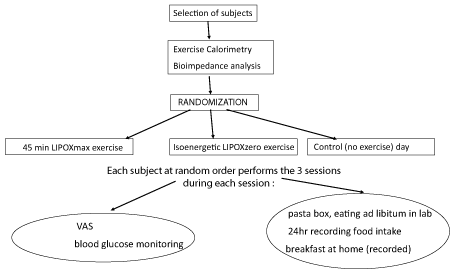
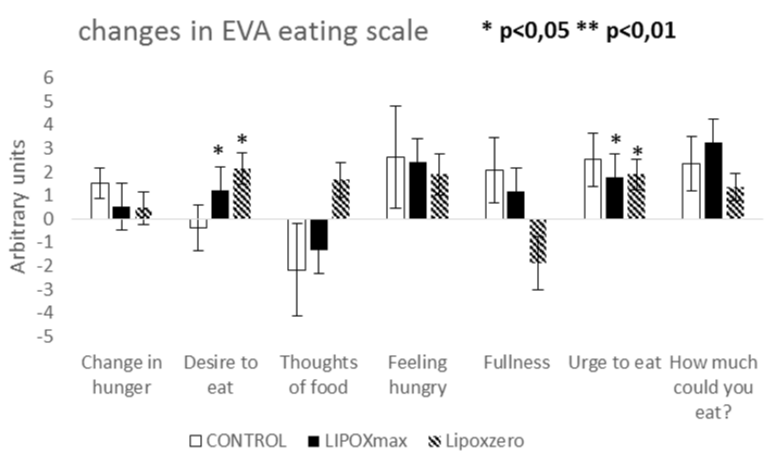
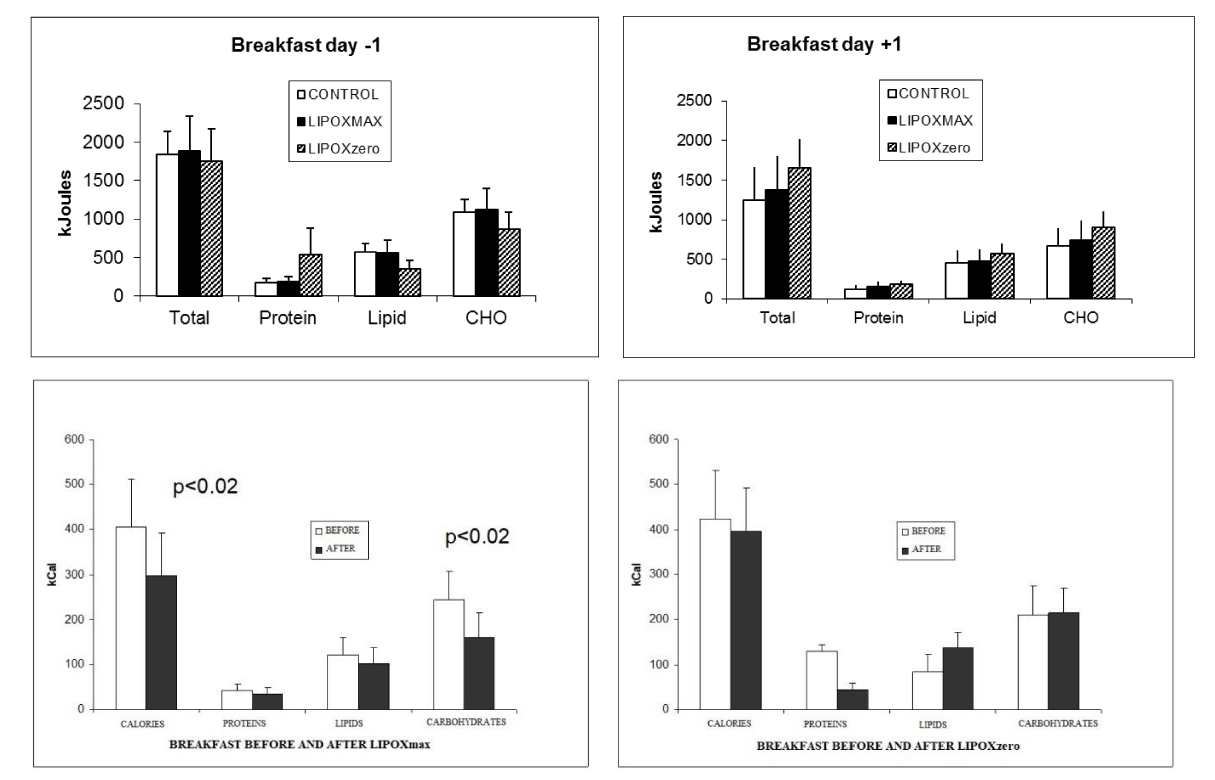
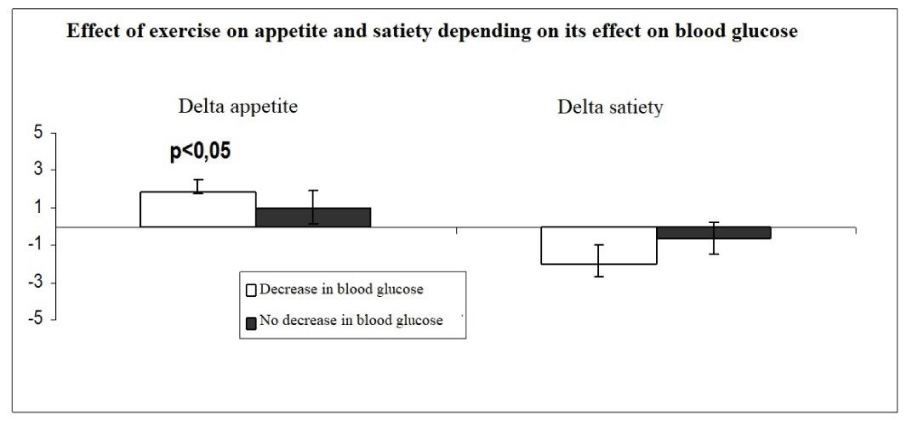
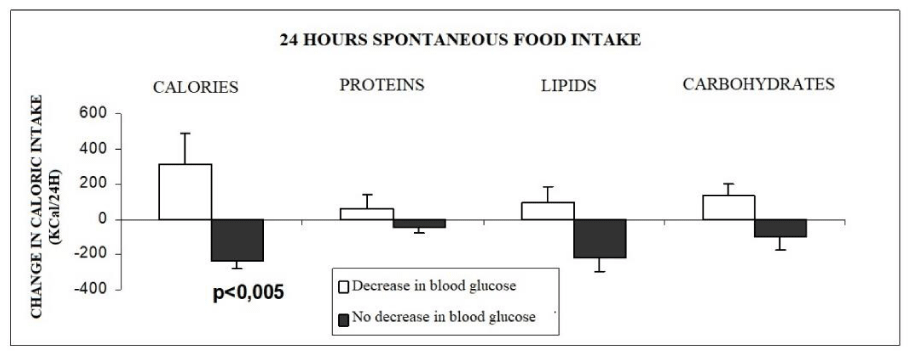

Sign up for Article Alerts